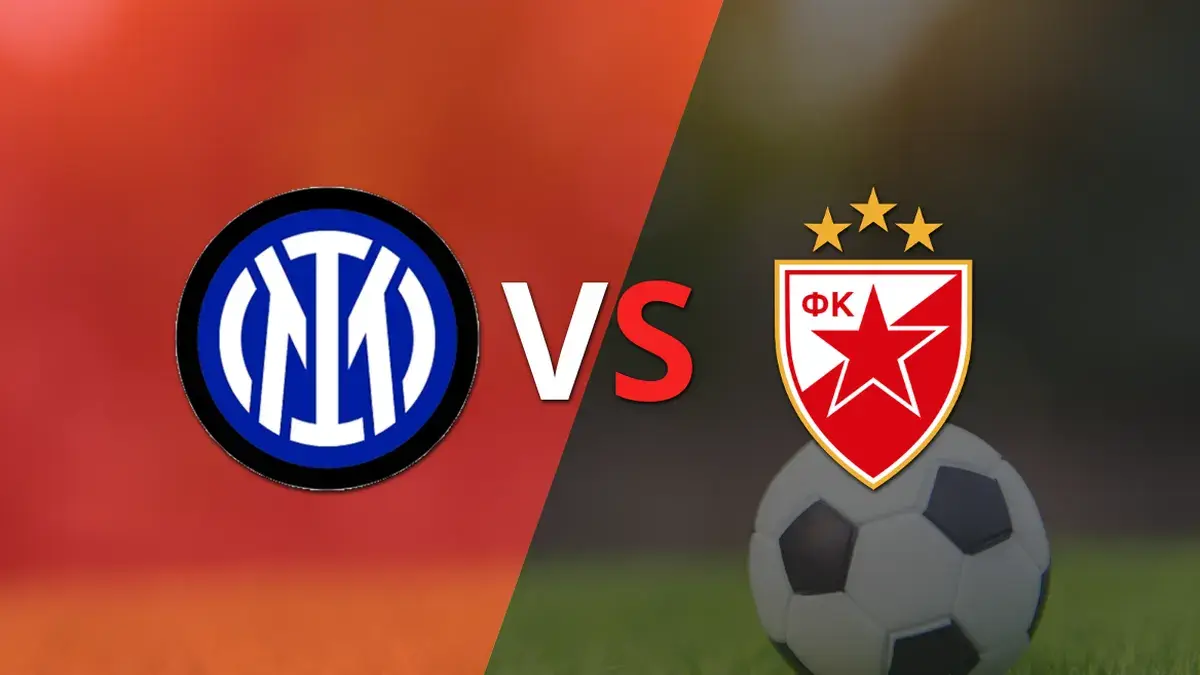In the annals of European football, there are matches that transcend simple results, shaping narratives, rekindling rivalries, and creating new legends. The showdown Inter vs. Estrella Roja falls neatly into this category—an encounter that embodies more than just ninety minutes of play. It’s a representation of footballing heritage, strategic brilliance, cultural pride, and the evolution of two proud clubs.
This article delves deep into the context, significance, tactics, key players, and broader implications of Inter vs. Estrella Roja. As football continues to evolve in a rapidly globalizing sports landscape, matches like these serve as a reminder of the sport’s power to unify and enthrall.
Historical Context of the Encounter
The narrative of Inter vs. Estrella Roja stretches back decades, originating in the mid-20th century when both clubs were building reputations across Europe. Inter Milan, rooted in Italian football excellence, and Red Star Belgrade (known locally as Crvena Zvezda or internationally as Estrella Roja), the pride of Serbian football, have had intersecting paths in European competitions, particularly in the UEFA Champions League and its predecessor, the European Cup.
These teams represent different footballing ideologies and histories. Inter is a symbol of tactical discipline, structured defense, and counter-attacking brilliance, while Estrella Roja has long been celebrated for its flair, resilience, and development of homegrown talent.
Inter Milan: Italian Giants with Continental Aspirations
Founded in 1908, Inter Milan has enjoyed an illustrious history, both domestically and internationally. With numerous Serie A titles, Coppa Italia trophies, and three UEFA Champions League victories, Inter stands tall among Europe’s elite. Their treble-winning season in 2009-10 under José Mourinho is etched in footballing folklore.
In recent years, the club has undergone significant transformation. With a focus on balancing youth and experience, Inter has returned to the forefront of European football. The club’s emphasis on tactical flexibility, spearheaded by coaches like Simone Inzaghi, has allowed them to compete effectively in multiple competitions.
Against a team like Estrella Roja, Inter’s approach combines strong midfield control with sharp wing play. Their defensive solidity, often featuring a back-three system, provides a strong foundation upon which their attacking players thrive.
Estrella Roja: Legacy of the Balkans
Established in 1945, Estrella Roja is the most successful club in Serbian football history. Their crowning achievement remains their 1991 European Cup win, making them one of the few clubs from Eastern Europe to have won the continent’s most coveted trophy. This feat remains a symbol of Balkan football’s potential and spirit.
The club is renowned for its passionate fan base, technical style of play, and a robust youth academy. Despite economic and infrastructural challenges, Estrella Roja continues to develop players who excel both domestically and abroad.
When facing a club of Inter’s stature, Estrella Roja channels its underdog spirit—relying on discipline, high pressing, and clinical finishing. Their supporters, known for creating an electric atmosphere, add an intangible edge to their performances, especially at their home ground, the Rajko Mitić Stadium.
Tactical Breakdown of Inter vs. Estrella Roja
The tactical battle of Inter vs. Estrella Roja often presents a fascinating contrast between structure and spontaneity.
Inter’s Tactical Approach:
Formation: 3-5-2 or 3-4-1-2
Key Strengths: Compact defense, wide overloads, intelligent pressing
Key Players: Nicolò Barella, Lautaro Martínez, Alessandro Bastoni
Inter seeks to control the tempo early, using their midfield triangle to dominate possession. Their wingbacks play a critical role, providing width and stretching the opposition’s defense.
Estrella Roja’s Tactical Setup:
Formation: 4-2-3-1 or 4-4-2
Key Strengths: Quick transitions, high-energy pressing, set-piece execution
Key Players: Aleksandar Katai, Mirko Ivanić, Milan Rodić
Estrella Roja looks to disrupt Inter’s build-up, often setting pressing traps in midfield. They rely on moments of individual brilliance to unlock tight defenses and are deadly on the counterattack.
The outcome of Inter vs. Estrella Roja often hinges on midfield control and the effectiveness of transitions.
Key Match Highlights and Turning Points
One of the most iconic Inter vs. Estrella Roja matches took place in the UEFA Cup in the early 1990s. It showcased how Estrella Roja, even when facing financially stronger teams, could outplay them with cohesion and courage.
In more recent clashes, Inter’s superior squad depth and tactical discipline have made the difference. Matches often begin tightly, with Estrella Roja seeking early breakthroughs, while Inter gradually assert dominance through possession and patience.
Set-pieces, individual duels, and substitutions frequently decide the fate of these encounters. The managers’ ability to adapt mid-game plays a pivotal role.
Fan Culture and Atmosphere
Another defining feature of Inter vs. Estrella Roja is the fan culture. Both sets of supporters bring unrivaled passion to the game.
Inter’s Ultras (Curva Nord) are known for their organized displays, unwavering support, and influence on club culture. They turn the San Siro into a fortress during big games.
Estrella Roja’s Delije are legendary for their choreographed displays, flares, and relentless chanting. Their presence can psychologically impact visiting teams, often creating one of Europe’s most intimidating atmospheres.
The clash of fan cultures adds a layer of drama to the footballing contest, making it more than just a game—it becomes a spectacle.
Media Coverage and Global Interest
The Inter vs. Estrella Roja fixtures are heavily covered across sports media, from traditional broadcasters to social platforms. Analysts highlight the strategic complexities, while fans engage in passionate debates.
Streaming platforms and social media have made it easier for global audiences to experience the match in real-time, complete with interactive statistics, expert commentary, and behind-the-scenes footage.
The growing international interest also speaks to the globalization of football, where local rivalries now capture global imaginations.
Youth Academies and Future Talent
Both clubs are pillars of youth development.
Inter’s Primavera system has produced stars like Marco Materazzi, Mario Balotelli, and more recently, Davide Frattesi.
Estrella Roja’s academy remains one of the Balkans’ premier talent pipelines, regularly supplying talent to top European leagues.
In Inter vs. Estrella Roja, these emerging talents often get their first taste of big-match experience. It’s an environment where potential stars can announce themselves to the world.
Commercial and Financial Implications
Modern football isn’t just played on the pitch—it’s also a financial game. Matches like Inter vs. Estrella Roja bring commercial opportunities through merchandise sales, broadcasting rights, and sponsorships.
For Inter, it’s a chance to expand their fanbase across Eastern Europe and beyond. For Estrella Roja, these matches offer financial boosts that are reinvested into the club’s infrastructure and youth programs.
Cultural and Political Undertones
Matches like Inter vs. Estrella Roja occasionally touch on historical and political sensitivities. Italy and the Balkans share complex histories, and football often becomes a space where cultural narratives are expressed.
However, the modern game has also been a platform for unity, showing how sport can bridge divides. Mutual respect between clubs and players has grown, replacing rivalry with healthy competition.
Predictions for the Future
Looking ahead, Inter vs. Estrella Roja is likely to remain a fixture of importance in European competitions. As both clubs continue investing in infrastructure and talent, future encounters may become more balanced and unpredictable.
There’s also potential for collaborations—youth exchange programs, joint training initiatives, and pre-season friendlies that go beyond competition.
Conclusion: Why It Matters
The saga of Inter vs. Estrella Roja is not merely about goals and scorelines. It represents two proud institutions, each with its own story, style, and spirit. Their clashes embody what makes football compelling: unpredictability, passion, and drama.
As fans, pundits, and historians look back on such encounters, they are reminded why football remains the world’s most beloved sport. With every new match, the legacy deepens, new heroes emerge, and the beautiful game continues its timeless dance.
Read More Here: Technology Crunch

